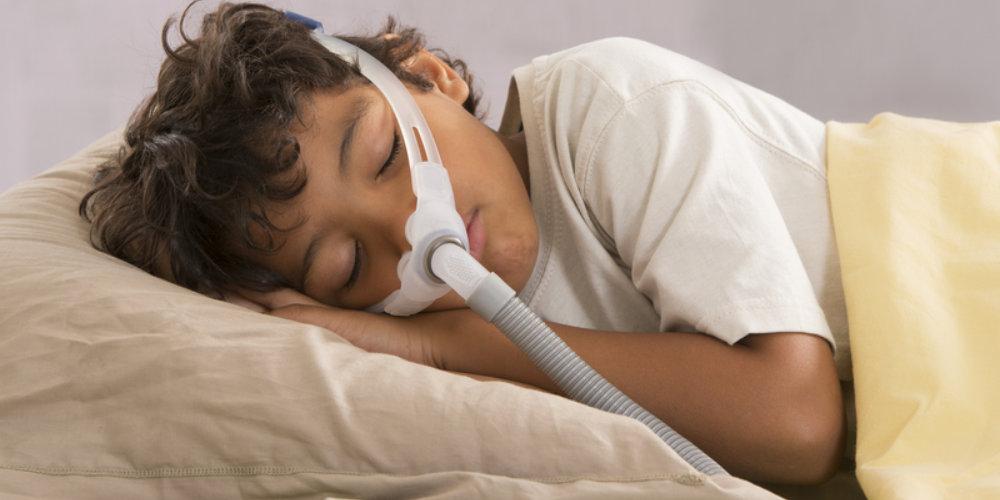Compliance and Children
What is compliance and why does it matter?
Compliance is how often Positive Airway Pressure (PAP) is used; including both the number of days and the number of hours. Guidelines set by the Centers for Medicare and Medicaid Services (CMS) are used to determine if you are considered complaint or non-compliant. According to CMS, the minimal goal for compliance is to wear PAP a minimum of 4 hours per night for 70% of the time within a consecutive 30-day period within the first 90 days of having the equipment. (Retrieved from: Centers for Medicare and Medicare Services)
In easier to understand terms, you have a full 90 day (or 3-month period) to wear your CPAP for a minimum of 4 hours each night for 70% of the time. To break it down further, 70% usage is the same as 21 days out of 30 consecutive days. Compliance is important for overall success with the therapy. PAP can greatly improve the quality of sleep, not just the quantity or length of time spent sleeping.
Why does the doctor want to know how much Positive Airway Pressure is being used?
The doctor wants to know how things are going in order to check that the therapy is working for the child and that the child is benefiting from wearing it. A typical adherence or compliance report contains:
- Percentage of use by days per month (Example 27 out of 30 day or 90%)
- Percentage of use over 4 hours per night (Example 15 out of 30 days or 30%)
- Average hours used when PAP is worn (Example 7hrs. 41 minutes)
- Leak rates
- AHI (Apnea Hypopnea Index-the number of respiratory events (apnea) that occur on average
Monitoring usage regularly helps the doctor to see if there are any values outside of the normal range that may need adjusting to improve usage. Whether it means increasing or decreasing the pressure(s), suggesting a mask change or to encourage greater PAP use overall, checking compliance is a very important part of positive airway pressure therapy.
How can children become compliant with Positive Airway Pressure (PAP)?
PAP compliance can be a challenge for many children and their caregivers but that does not mean it is impossible! Sometimes there are barriers or things that can prevent regular use. Maybe the mask is too big or too small. Maybe it gets taken off in the middle of the night and stays off until the morning. Maybe it was just a long day and trying to get the mask and machine on seems like too much. All of these are common occurrences and luckily all have solutions.
The most important thing to remember with Positive Airway Pressure (PAP) and children is that it is a medical treatment for a medical condition and worth the energy to work on adherence.
It is also important to add PAP into the regular, nighttime or bedtime routine. If there is not one already established, try to create one together with the child. Screen limitation before bed, quiet activities like reading or drawing, a shower or bath, teeth brushing are all good to include. Some children benefit from a chart showing the different activities, some children like to take charge and show they can do it on their own. Whatever works best for you and the child is what is right!
Tips & Reminders
For Younger Children-Positive Airway Pressure (PAP) may not make a lot of sense to younger children and they may wonder why they have to wear a funny mask on their face.- Keep explanations simple and not overly complex.
- Let them touch the mask, put it on and off their face with and without the pressure going.
- Start by having the child wear it for short periods during the daytime to get used to how it feels: during commercial breaks of their favorite show, while they are playing a game, anything that can be a distraction so the child can get used to the sensation without paying direct attention to it.
- A rewards-based system may be the key to success. Work together to come up with worthy rewards and set a goal that can be met easily at first to encourage success. Increase the goal in small increments to continue success.
- Have a support system, people who can also encourage usage or answer questions
- Encourage questions for what the child may not understand.
- Encourage “ownership” or responsibility over the machine: the child is in charge of making sure the water is in the machine, the hose is connected and the mask is clean and ready.
- Add fun stickers to the mask (just not covering the exhalation port) to make it personalized
- If the pressure is difficult to get used to, encourage use while doing distracting activities: homework, while playing games, or watching their favorite show.
- Encourage little successes along the way-little successes add up over time!
- Encourage open communication for use and non-use: if not using work to find the root cause- Mask issue? Pressure issue? Nasal dryness?
- For teens especially discuss the dangers of drowsy driving and why wearing CPAP consistently is an important step in preventing such dangers.
- Encourage an active role in sleep health, set a good example with sleep hygiene for yourself, limit late night screen usage.

